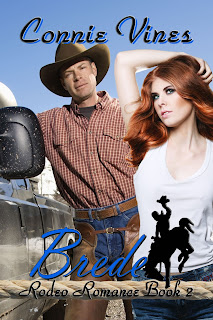I have titled my topic “Romancing the Landscape”. However, the landscape can also be a menacing
character in a horror novel; comic relief, or as in the movie,
The Never
Ending Story, be the embodiment of living creatures.
So, how do I approach this project? Why would this be of interest to me?
While every writer knows, it is useful to infuse landscape/setting
as a tool to set the mood/foreshadow, and do so as a matter of course.
- The beach at sunset, a tranquil waterfall. If you hero has fought a major battle, don’t
send him to a night club. Turn his
setting into a place to recuperate.
- A setting can introduce conflict, or cause
trouble. A violent storm, gridlock, a
jungle where he becomes lost.
- The library, bookstore, writing on ancient walls,
can provide a ‘mentorship’ of sorts. The
hero will discover, overcome his fears.
- A setting can show the ‘flaw’ of the hero. A man fighting addiction is at a bar watching
others, a selfish man is at a soup kitchen.
Place him in a setting to examine his own flaws.
- A model of who he wants to be. A church, a free
medical clinic, a loving home, are all settings that can provide an atmosphere that
fosters qualities to which he aspires.
Setting as a character is a
deeper commitment. Setting as a
character will appear throughout the course of your novel. Therefore (groan) it requires research,
plotting attention, and action and reaction on the part of the hero and heroine.
Often I will set up a flow
chart, spread sheet, or make notes on my software writing programs when
developing my novel. In this case I use
a notebook to take notes/or snap pictures to Evernote that correspond to the
numbers on my “Setting Worksheet”. Why a
work sheet—“that’s so old school”. Yes,
this is old school but studies have proved that there is something about the
process of pen to paper that activates creativity in the brain.
So what’s on my
worksheet?
·
Title of project
·
Year
·
Month and day that the story begins
·
Season
·
Location
·
Why am I setting my story here?
·
Why are the hero and/or heroine here?
Climate/Landscape
·
Climate
·
Average rainfall/temp etc.
·
Approximately what months do the season change?
·
Topography
·
Plants and animals that live here
·
Local land forms and points of interest
·
Natural obstacles that will help/hinder your
hero/heroine
·
How did your hero/heroine get here? How will he/she leave?
Social
Setting
·
Population
·
Types of dwellings
·
Types of stores or businesses
·
Ethnic make up of the community
·
Local industries/jobs
·
What holidays and special occasions are
celebrated
·
What kinds of entertainment are available?
·
What current events might be important to your
story?
Weaving into to the story
·
One line characterization of this setting
·
How is it the same as/different from similar
settings?
·
What trait will make this setting come alive,
and why?
·
How does the hero/heroine fell about being
there?
·
Will the readers like/dislike this setting and
why?
Examples
taken from novels to illustrate my point:
Perhaps the glide of long railway travel was
still with me, for more than anything else I felt motion in the landscape; in
the fresh, easy-blowing morning wind, and in the earth itself, as if the shaggy
grass were a sort of loose hid, and the underneath it herds of wild buffalo. ~
My Antonia, by Willa Cather. (Chapter 2).
I feel a cold northern breeze play upon my
cheeks, which braces my nerves and fills me with delight. Do you understand
this feeling? This breeze, which has traveled from the regions towards which I
am advancing, gives me a foretaste of these icy climes. ~ Letter 1,
Frankenstein, by Mary Shelley.
Every novel is different. Not every story calls for a setting to have a 'life of its own". However, when the landscape demands a major role in your story line, listen. The results are often soul-stirring and magical.
And from my own works:
It was only the cologne, Rachel reminded herself when Lynx leaned closer and pointed out the skill of the fiddle player--she always loved the scent of a good cologne. Warm, and Musky. Or, maybe it was his reputation that held such appeal--he was a rodeo cowboy. Bull riders flirted with death and danger every day, and that alone could be a real turn on for some women.
Still she knew none of those things was the real reason she was reacting this way. ~ Lynx, Rodeo Romance, by Connie Vines
She pulled the red gingham curtain aside from the kitchen window and stared out into the rain for the tenth tine in less than an hour. In the distance, she could see Brede going about his chores. . .There was something about him, which spoke of power, especially in the way he moved. But there was also wildness in him and profound loneliness. Perhaps the loneliness dept her from being afraid. . .~ Brede, Rodeo Romance Book 2, by Connie Vines
Twelve-thousand gleeful ghouls stormed Long Beach's Promenade. the crowd became so large that it spilled out over Pine Avenue for an all-out downtown invasion. Meredith didn't recall much about the accident, nor who or what, reanimated her. She remembered over-hearing a security officer informing a pungent-smelling zombie. . . ~ Here Today, Zombie Tomorrow Book 1 Sassy & Fun Fantasy Series by Connie Vines
Photographs give me a reference point for ensuring I "know" the depth of my setting.
What do you think? Can you name a novel where the setting took on a life of its own?
Thank you for stopping by this month to read my blog post. I hope to see you again next month.
 |
1800's England
|
 |
Nebraska Farmland
|
Happy Reading,





























.jpg)


